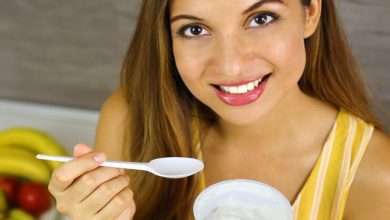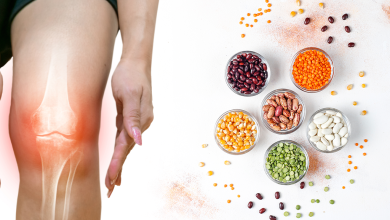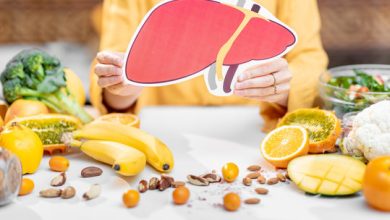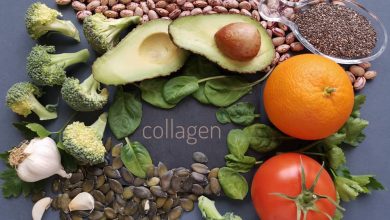9 Delicious High-Protein Foods to Keep Women Over 50 Feeling Young and Strong
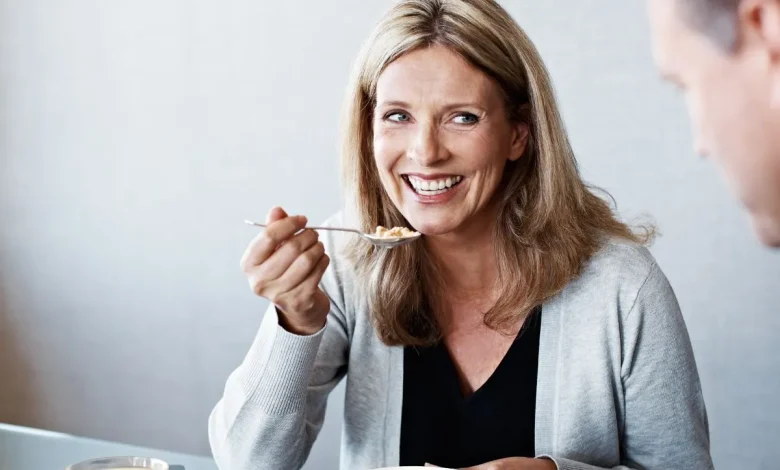
As women age, maintaining muscle strength, bone density, and vitality becomes increasingly important. Once you hit 50, your body naturally begins to lose muscle mass—a process known as sarcopenia. Hormonal changes, slower metabolism, and lower energy levels can make staying fit more challenging. But there’s one powerful solution that supports graceful aging, boosts metabolism, and helps maintain strength: protein.
Protein isn’t just for athletes or bodybuilders—it’s a key nutrient for every woman who wants to stay strong, energized, and youthful well into her 50s and beyond. The right high-protein foods can help balance hormones, improve skin elasticity, maintain lean muscle, and even enhance mood.
9 Delicious High-Protein Foods
Let’s explore 9 delicious high-protein foods that every woman over 50 should include in her diet to look and feel her best.
1. Eggs – The Perfect Protein for a Perfect Start
Eggs are one of the most nutrient-dense foods on the planet—and they’re an ideal way for women over 50 to start their day strong. Each egg contains about 6–7 grams of high-quality protein and all nine essential amino acids your body needs for repair and maintenance.
Why Eggs Are Great for Women Over 50
- Muscle preservation: The amino acid leucine in eggs supports muscle synthesis, helping combat age-related muscle loss.
- Bone health: Eggs contain vitamin D, essential for calcium absorption and bone strength.
- Brain and eye health: Rich in choline and lutein, eggs help support cognitive function and protect eyesight—two concerns that become more important with age.
Pro Tip:
Make a protein-packed omelet with spinach, mushrooms, and feta cheese for a nutrient boost. Or, keep it simple with a boiled egg as a mid-morning snack.
2. Greek Yogurt – A Creamy Powerhouse for Gut and Muscle Health
Greek yogurt is a delicious and versatile source of protein—offering nearly double the protein of regular yogurt (about 15–20 grams per cup).
Why It’s Perfect for Women Over 50
- Supports digestion: It’s rich in probiotics that promote a healthy gut microbiome—key for digestion and immune function.
- Strengthens bones: Packed with calcium and vitamin B12, it helps maintain bone density and energy levels.
- Keeps you full longer: The combination of protein and probiotics helps control appetite and prevent overeating.
Pro Tip:
Top a serving of plain Greek yogurt with berries, flaxseeds, and a drizzle of honey for a refreshing, nutrient-rich breakfast or snack.
3. Salmon – The Anti-Aging Superfood
Salmon isn’t just a delicious fish—it’s a superfood for women over 50. It’s rich in protein (around 22 grams per 3-ounce serving) and loaded with omega-3 fatty acids, which are crucial for heart, joint, and brain health.
Why Salmon Is a Must
- Supports heart health: Omega-3s reduce inflammation and lower bad cholesterol.
- Boosts skin glow: Healthy fats improve skin hydration and elasticity, combating dryness and fine lines.
- Protects memory and cognition: DHA, an omega-3 fat, supports brain function and may lower the risk of cognitive decline.
Pro Tip:
Try baked or grilled salmon with lemon and herbs. Pair it with steamed broccoli or quinoa for a complete, high-protein dinner.
4. Lentils – The Plant-Based Protein Champion
If you’re looking for a meat-free source of protein, lentils are your go-to. A single cup of cooked lentils packs 18 grams of protein and a wealth of fiber, iron, and folate—making them one of the most balanced plant-based foods.
Why Lentils Are a Smart Choice
- Supports heart health: Their high fiber content helps lower cholesterol.
- Boosts energy: Lentils are rich in iron, preventing fatigue and supporting red blood cell production.
- Promotes digestive health: Fiber keeps your digestive system regular and reduces bloating.
Pro Tip:
Use lentils in soups, salads, or stews—or try them in a vegetarian curry with turmeric and coconut milk for an anti-inflammatory boost.
5. Chicken Breast – A Lean Classic for Muscle and Metabolism
Chicken breast remains one of the leanest and most versatile protein sources available, with 26 grams of protein per 3-ounce serving. It’s low in fat, easy to prepare, and ideal for women who want to maintain muscle tone without adding excess calories.
Why Chicken Breast Matters
- Helps retain lean muscle: High-quality protein supports recovery after exercise.
- Boosts metabolism: The thermic effect of protein helps your body burn more calories during digestion.
- Supports bone and joint health: Chicken contains phosphorus, vital for strong bones and joints.
Pro Tip:
Grill or bake chicken with olive oil, lemon, and herbs for a light yet satisfying meal. Add roasted vegetables or a quinoa salad for extra nutrients.
6. Cottage Cheese – A Protein-Rich Snack That Supports Bone Health
Cottage cheese might not be glamorous, but it’s a nutritional powerhouse. One cup offers about 25 grams of slow-digesting protein, making it perfect for sustained muscle repair and overnight recovery.
Why It’s Ideal for Women Over 50
- Promotes fullness: Its slow-digesting casein protein keeps hunger at bay longer.
- Strengthens bones: High in calcium and phosphorus—both essential for bone density.
- Supports weight management: Low in fat and carbs, making it a great addition to a balanced diet.
Pro Tip:
Mix cottage cheese with pineapple or sliced peaches for a sweet and satisfying snack. You can also use it as a creamy base for smoothies.
7. Quinoa – The Gluten-Free Complete Protein
Quinoa is one of the few plant foods that’s a complete protein, meaning it contains all nine essential amino acids. One cup of cooked quinoa provides 8 grams of protein—plus fiber, iron, magnesium, and antioxidants.
Why Quinoa Should Be on Your Plate
- Supports hormone balance: Rich in magnesium, which helps reduce menopausal symptoms like fatigue and muscle cramps.
- Boosts energy: Its complex carbs provide steady energy without blood sugar spikes.
- Aids digestion: High fiber content keeps your digestive system healthy and regular.
Pro Tip:
Use quinoa as a base for grain bowls, toss it into salads, or serve it warm with vegetables and grilled fish.
8. Tofu – A Plant-Based Protein for Hormonal Balance
Tofu, made from soybeans, is an excellent source of protein, especially for women seeking vegetarian or vegan options. A half-cup serving delivers 10 grams of protein—plus valuable plant compounds called phytoestrogens.
Why Tofu Is Great for Women Over 50
- Supports hormonal balance: Isoflavones in tofu mimic mild estrogen effects, which can ease hot flashes and mood swings.
- Promotes heart health: Low in saturated fat and cholesterol-free.
- Helps maintain muscle mass: High-quality soy protein supports lean body composition.
Pro Tip:
Marinate tofu in tamari and garlic, then pan-sear or grill it. Add it to stir-fries, salads, or even breakfast scrambles.
9. Almonds – The Crunchy Protein Snack You’ll Love
Almonds are not only delicious—they’re a nutrient powerhouse. A handful (about 23 almonds) provides 6 grams of protein, healthy fats, fiber, and vitamin E, which promotes glowing skin and cellular health.
Why Almonds Are a Smart Snack
- Supports heart and brain health: The monounsaturated fats and antioxidants improve circulation and cognitive function.
- Promotes satiety: Helps manage weight and curb cravings.
- Protects skin and hair: Vitamin E combats oxidative stress and supports collagen production.
Pro Tip:
Snack on raw or roasted almonds between meals. You can also sprinkle almond slivers over oatmeal, salads, or yogurt for added crunch and nutrition.
How Much Protein Do Women Over 50 Really Need?
While the average adult woman needs about 46 grams of protein daily, women over 50 should aim higher—around 60–80 grams per day, depending on activity level and health status.
As estrogen levels drop during and after menopause, the body becomes less efficient at using protein for muscle synthesis. Increasing your intake ensures your muscles, bones, and tissues stay strong and healthy.
Here’s a quick breakdown of how you can meet your protein goals throughout the day:
- Breakfast: 2 eggs + Greek yogurt (20–25g)
- Lunch: Lentil salad or chicken breast (25–30g)
- Snack: Cottage cheese or almonds (10–15g)
- Dinner: Salmon with quinoa and vegetables (25–30g)
Bonus Tips: Making Protein Work for You
1. Spread It Throughout the Day
Your body absorbs and uses protein more efficiently when you consume it in smaller amounts throughout the day rather than in one large meal. Aim for 20–30 grams per meal.
2. Combine Protein with Fiber and Healthy Fats
Pairing protein with fiber-rich foods (like veggies or whole grains) and healthy fats (like avocado or olive oil) stabilizes blood sugar and keeps you full longer.
3. Stay Hydrated
Higher protein intake increases the need for water to help your kidneys flush out nitrogen byproducts. Drink plenty of fluids throughout the day.
4. Prioritize Whole Foods Over Powders
While protein shakes can be convenient, whole foods provide additional nutrients like fiber, vitamins, and antioxidants that support overall health and aging.
Final Thoughts: Nourish, Strengthen, and Thrive
Turning 50 isn’t about slowing down—it’s about thriving with vitality. Prioritizing protein-rich foods can help women stay lean, energized, and youthful while reducing the risk of age-related muscle loss, bone weakening, and fatigue.
By incorporating these 9 delicious high-protein foods—from eggs and Greek yogurt to salmon, lentils, and almonds—you’ll be giving your body the building blocks it needs to stay strong, vibrant, and full of life.
So, whether it’s a creamy bowl of Greek yogurt at breakfast or a savory salmon dinner, every protein-packed meal brings you one step closer to feeling your best—at 50, 60, and beyond.

